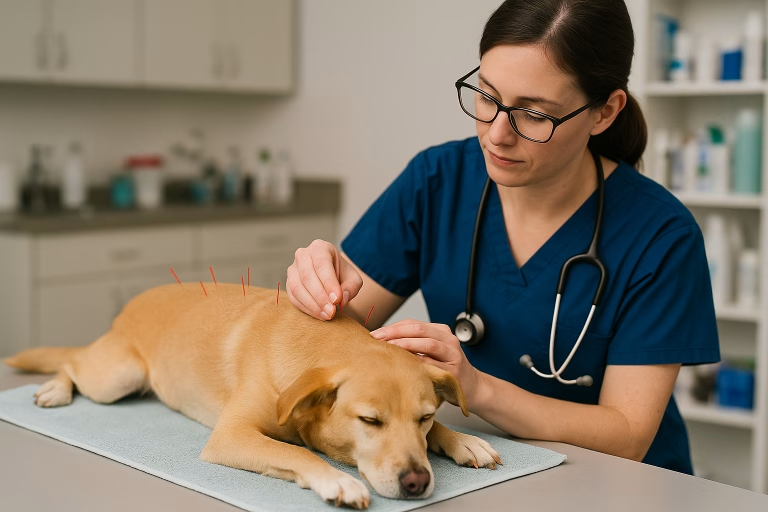
Menstrual cramps (dysmenorrhea) are a common issue experienced by up to 90% of menstruating women. These cramps, often felt in the lower abdomen and back, are caused by the contraction of the uterus as it sheds its lining. For some, the pain is mild and manageable, but for others, it can be severe enough to disrupt daily life. Fast, effective relief is essential—especially when natural solutions and pharmacist-approved remedies can make a difference.
The pain is typically strongest just before and during the first few days of a period, but can also be accompanied by additional symptoms like nausea, headaches, fatigue, bloating, and mood changes. These symptoms can affect work performance, school attendance, physical activity, and emotional well-being. For individuals dealing with chronic or intense period pain, effective management is not just about comfort—it’s about reclaiming quality of life.
There are two main types of menstrual cramps:
- Primary dysmenorrhea: Occurs in otherwise healthy women and is caused by normal uterine contractions due to prostaglandin hormone activity.
- Secondary dysmenorrhea: Results from underlying health conditions such as endometriosis, fibroids, pelvic inflammatory disease, or adenomyosis, and typically requires medical diagnosis and specialized treatment.
Fortunately, advancements in menstrual health have led to a wide range of both over-the-counter and holistic treatments that can ease the pain effectively. From fast-acting medications to natural supplements, wearable tech, and traditional remedies like heat therapy, there are more options than ever to find what works best for your body.
This guide presents a comprehensive comparison of the top 7 most effective menstrual pain relief solutions—highlighting their benefits, how they work, pros and cons, and pharmacist-backed counseling points to help you make the most informed decision.
Top 7 Remedies for Fast and Natural Period Pain Relief
1. Advil (Ibuprofen) – #1 Pharmacist-Recommended
Overview: Advil contains ibuprofen, a nonsteroidal anti-inflammatory drug (NSAID) that reduces the levels of prostaglandins—hormone-like substances that cause uterine contractions and inflammation.
How It Works: Ibuprofen blocks the COX enzyme, which plays a key role in producing prostaglandins. Lower prostaglandin levels result in less uterine muscle contraction, reducing cramp intensity and pain.
Pros:
- Fast-acting relief within 30–60 minutes
- Strong anti-inflammatory effects
- Widely recommended by healthcare professionals
Cons:
- Can irritate the stomach if taken on an empty stomach
- Not suitable for those with NSAID sensitivity
Counseling Points:
- Take with food or milk to avoid stomach irritation.
- Do not exceed recommended daily dosage.
- Avoid in patients with peptic ulcers, kidney disease, or known NSAID allergies.
2. ThermaCare Menstrual HeatWraps – Drug-Free Heating Relief
Overview: ThermaCare HeatWraps are designed to provide continuous heat therapy to the lower abdomen, soothing menstrual pain naturally without medication.
How It Works: The wraps contain heat cells that activate on contact with air, producing low-level, consistent heat that improves blood circulation and relaxes uterine muscles. This reduces cramping and increases comfort throughout the day.
Pros:
- Natural and drug-free
- Long-lasting (up to 8 hours)
- Comfortable and wearable under clothes
Cons:
- Single-use only
- May not be warm enough for extreme cramps
Counseling Points:
- Use directly on clean, dry skin and do not use while sleeping.
- Do not apply to broken or damaged skin.
- Monitor for skin sensitivity during extended use.
3. Midol Complete – All-in-One Symptom Relief
Overview: Midol Complete targets not just cramps, but also bloating, irritability, and fatigue—common menstrual symptoms. It combines acetaminophen, caffeine, and pyrilamine.
How It Works:
- Acetaminophen eases pain by blocking pain signals in the brain.
- Caffeine acts as a mild diuretic, reducing bloating and increasing alertness.
- Pyrilamine (an antihistamine) can reduce mood swings and irritability associated with PMS.
Pros:
- Comprehensive relief from multiple period symptoms
- Works quickly
- Readily available in stores
Cons:
- Caffeine may cause jitters
- Not ideal for women sensitive to antihistamines
Counseling Points:
- Limit additional caffeine intake to avoid side effects like jitteriness or insomnia.
- Avoid alcohol while using acetaminophen to reduce liver risk.
- Not recommended for prolonged use without physician guidance.
Read more about Midol Complete
4. Rael Heating Patch – Organic and Chemical-Free Relief
Overview: Rael Heating Patches are infused with natural ingredients like iron, charcoal, and salt. They are perfect for those seeking clean, eco-friendly pain relief.
How It Works: These patches generate soothing heat through a natural oxidation process, increasing circulation and reducing muscle tension. The consistent heat targets the lower abdomen and provides hours of comfort.
Pros:
- Safe for sensitive skin
- Plant-based and eco-conscious
- Discreet and portable
Cons:
- Pricier than other heat products
- Heat output may vary
Counseling Points:
- Apply externally on clean, dry skin.
- Do not use in combination with medicated creams or other heat sources.
- For external use only—remove after recommended duration.
5. Magnesium Supplements – Natural Cramp Prevention
Overview: Magnesium supports muscle and nerve function and plays a crucial role in regulating prostaglandins, making it ideal for long-term relief.
How It Works: Magnesium helps relax smooth muscle tissue and reduces prostaglandin levels, thereby lowering the intensity and duration of uterine contractions.
Pros:
- Reduces cramps and PMS symptoms over time
- Natural and non-habit-forming
- Supports mood and sleep
Cons:
- Requires consistent use for results
- May cause digestive upset at high doses
Counseling Points:
- Best taken daily with food.
- Choose magnesium glycinate or citrate for better absorption.
- Reduce dose if experiencing loose stools.
Magnesium and Period Pain – Healthline
6. Livia Device – Wearable Electrical Nerve Stimulation
Overview: Livia is a wearable, FDA-cleared device that uses transcutaneous electrical nerve stimulation (TENS) technology to block menstrual pain signals.
How It Works: Livia sends gentle electrical pulses that stimulate nerves and block pain signals before they reach the brain. This technology distracts the nervous system and provides almost immediate relief.
Pros:
- Drug-free and reusable
- Instant relief while in use
- Compact and portable for on-the-go relief
Cons:
- Higher upfront cost
- Relief stops when the device is removed
Counseling Points:
- Place electrodes on clean, dry skin on lower abdomen.
- Use only as directed and avoid if pregnant or using pacemakers.
- Recharge regularly and store in a safe place.
7. Essential Oil Blends (e.g., Clary Sage, Lavender) – Aromatherapy and Topical Relief
Overview: Essential oils like clary sage, lavender, and peppermint are known for their calming and anti-inflammatory effects when used topically or in diffusers.
How It Works: These oils can be massaged into the lower abdomen or inhaled to reduce tension and improve relaxation. Clary sage, in particular, is believed to balance hormones and calm uterine spasms.
Pros:
- Natural and holistic
- Promotes relaxation and stress relief
- Can be used in massage or aromatherapy
Cons:
- May cause skin irritation if not diluted
- Effects may vary from person to person
Counseling Points:
- Always dilute essential oils with a carrier oil (like coconut or jojoba) before applying to skin.
- Perform a patch test to check for allergies.
- Avoid ingestion and contact with eyes.
Clary Sage Benefits – Medical News Today
Final Thoughts
Finding the best menstrual pain relief solution isn’t about chasing a one-size-fits-all cure — it’s about understanding your body’s unique needs and choosing a remedy that aligns with your lifestyle, severity of symptoms, and wellness goals. Whether you’re dealing with occasional cramps or chronic dysmenorrhea, the right combination of treatments can make a world of difference in how you function, feel, and thrive during your cycle.
We reviewed a diverse set of options — from pharmacist-recommended over-the-counter medications like Naproxen Sodium and Acetaminophen, to natural remedies like Magnesium supplements and Herbal heat patches, all the way to newer innovations like wearable TENS devices and CBD balms. Each offers unique benefits, and many can be used in complementary ways.
👉 If you’re unsure where to start, speaking with a pharmacist or OB-GYN is always a wise step. Many remedies work best when integrated into a broader self-care plan that includes hydration, stress management, exercise, and nutrition.
🔁 Consider Rotating or Combining Remedies
- Use NSAIDs at the onset of cramps to stop pain at its source.
- Apply heat therapy or TENS devices for non-drug relief during work or sleep.
- Integrate dietary supplements like magnesium or B vitamins to reduce PMS and cramp severity over time.
- Add topical relief (e.g., CBD balms) for soothing comfort without systemic effects.
📝 Final Tip:
Always monitor how your body responds to each product. Keep a menstrual health journal to track patterns, side effects, and what works best for you. Over time, this empowers you to manage symptoms with greater confidence and clarity.
🌸 Empower yourself with knowledge. Relief is possible — and you deserve it, every cycle.
✅ Don’t forget to share this guide with someone who might benefit from it!
#MenstrualRelief #PeriodCare #NaturalCrampRelief #WomensHealth #PharmacistRecommended #PeriodSupport










